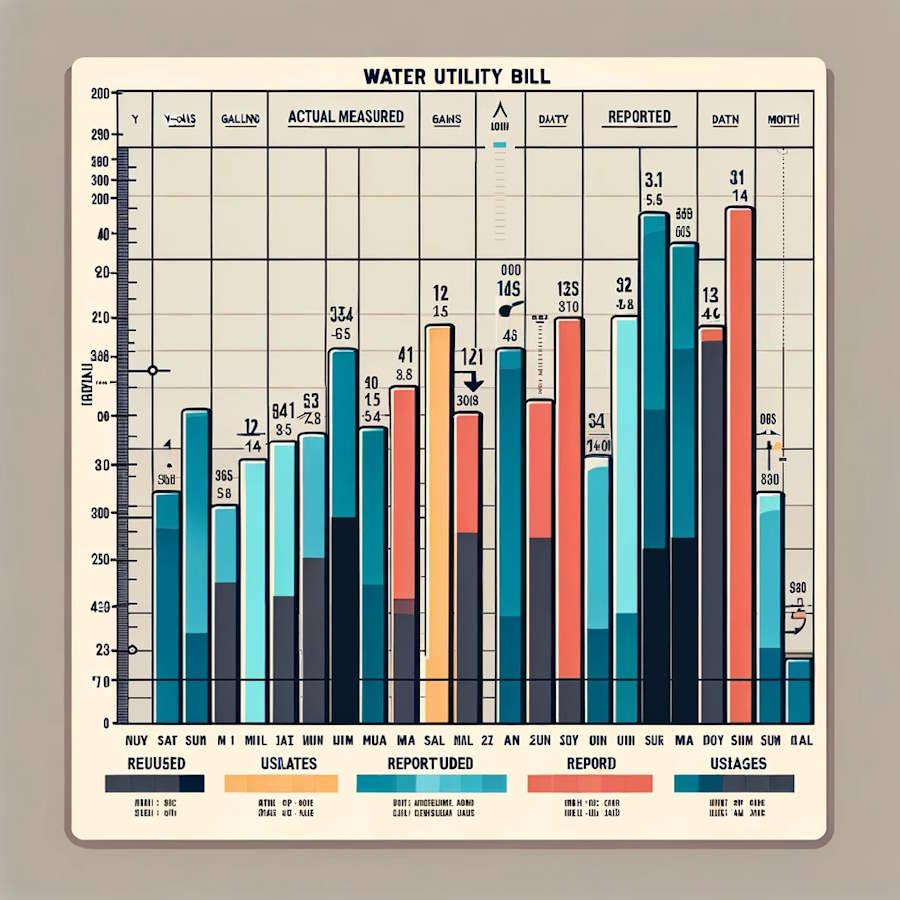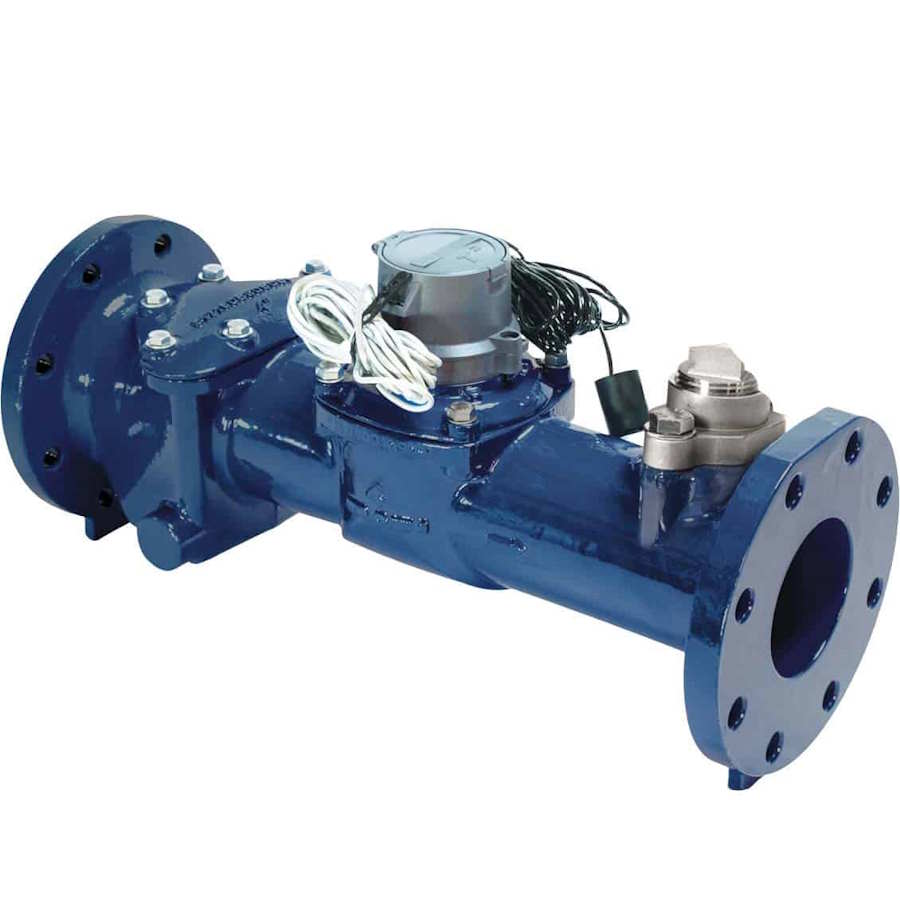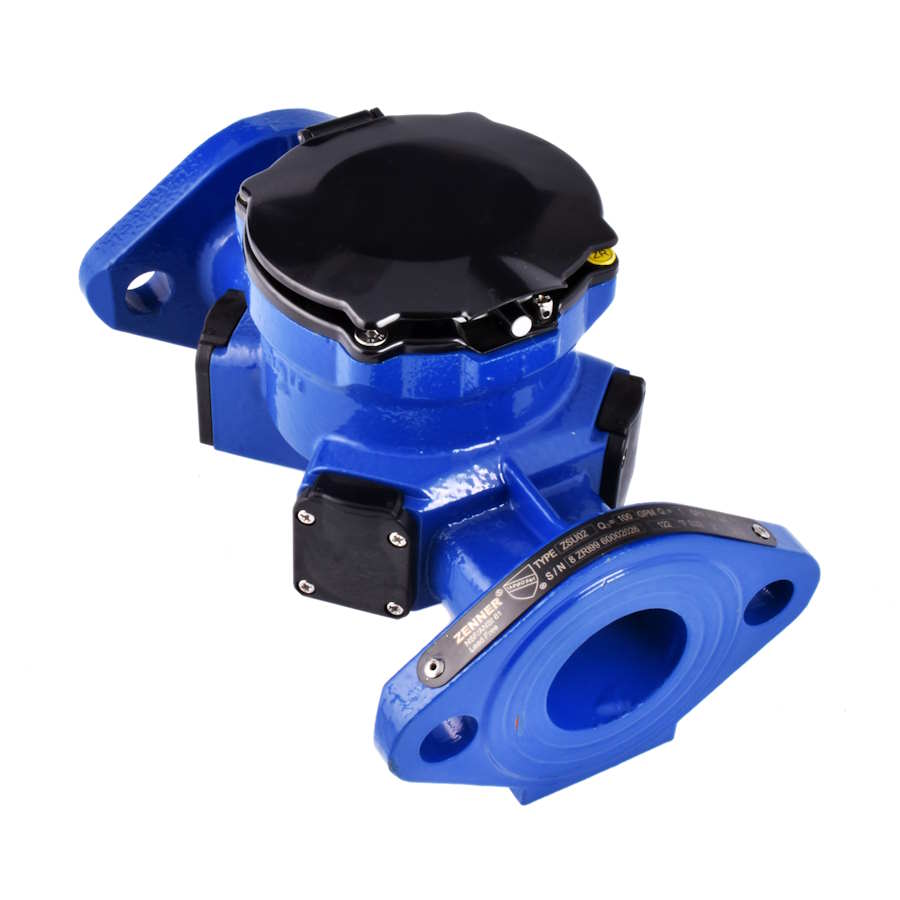Monitoring your water flow meter for your irrigation or operational indoor systems is important for leak detection, abnormal use, or billing verification.
Keeping the landscaping and flowers in front of the office looking their best is very important for property appearance and customer happiness.
Having a wireless flow monitoring system helps maintain appearances. A wireless monitoring system simplifies installation and provides easy scalability and expansion for any irrigation, indoor, and industrial water system.
Essential Features for Smart Irrigation
Here are a few important features to consider when choosing a smart irrigation system and monitoring system:
Flow Rate & Total Water Use Tracking:
You want to select a monitoring system that can show you the real-time flow rate as well as the total water usage for any given date or zone.
This tracking data will allow you to compare water usage over many months or years by viewing graphs of the water flow on any given date.
All of this water flow data is logged so you can even compare last year’s water usage versus this year’s.
Leak Detection & Alerts:
Since the water meters listed in this article all have digital outputs they can be connected to a small wireless device that can report the meter’s flow state in real-time.
This allows you to monitor even the slightest water flow usage.
This provides you with several advantages including:
- Leak Alerts
- Unscheduled Usage Alerts
- Utility Billing Comparison
Leak alerts are critical since they can quickly send a message to your property manager about leaks so they can address the problem and limit the high utility bills and flooding liabilities.
See more information on commercial leak detection systems.
Unscheduled usage alerts will let you know if the irrigation or indoor water is being used when it should not be. This provides the date and time the water was being used so it can be linked to any personnel at the property during that time.
Utility bill comparison will allow you to compare your monthly utility bill to see if there are any gross errors that need to be addressed.

Zone-Level Monitoring:
You should be able to monitor each zone independently as well as set schedules. In addition, the monitoring system should tell you if a zone or valve is malfunctioning so it can be repaired.
Zone-level monitoring is easy with a point-to-point system but if you have a 2-wire system it may take a bit more time to diagnose a bad valve or zone.
Integration with Smart Controllers:
Your irrigation system should have the necessary interfaces that can connect to any smart controller, such as master valves, pulse wiring, and zone valve controls.
A good smart controller will also have a cellular or wifi interface that connects the irrigation system to the real-time monitoring service so alerts and be issued as needed.
Remotely Monitoring Flow of your Irrigation Systems:
You should be able to monitor and control your entire system from a desktop web browser or a mobile phone app.
This allows maintenance personnel to easily test zones from their phone and troubleshoot valves if there is a problem.
Top Wireless Water Flow Monitoring Options
Some of the popular brands of smart irrigation controllers are:
- Banyan Water
- Hunter
- Rain Bird
If you have any existing Hunter or Rain Bird, for example, a Banyan Water controller can be connected to these existing systems to provide a fully monitored wireless system.
Keep in mind, that these controllers must connect to existing zone valves or flow meters.
How do Flow Meters Work
Flow meters work by using a mechanism inside a water meter or valve that turns a wheel as water passes through the pipe.
There are other ways to measure water flow through pipes.
Here are the different types of flow meters:
- Pulse or Reed Switch
- Ultrasonic
Pulse or Reed switch type flow meters have a wheel or magnetic rotor that turns as water flows through it. This is a moving part since it must spin as water is flowing.
An ultrasonic flow meter uses sound that bounces off the inside of the pipe to measure water flow. This type of flow measure uses no moving parts and can be attached to an existing pipe easily.
Choose the Right Flow Meter for your Needs
Flow rate involves sizing the correct valve size and specifications that will work properly at your maximum water flow usage.
Temperature and location of the valve is also a consideration.
So, the flow meters measure the actual water flow usage and the smart irrigation controllers report this flow data to the monitoring service.
The following are examples of the best water flow meters that are used for irrigation and indoor systems. These water meters each have wiring that connects directly to a wireless smart irrigation system:
Sensus – Omni T2 (show pic, paragraph discuss installation, and list advantages)

Sensus offers a wide range of flow meters like the OMNI seria with floating ball technology and the iPerl family with magnetic technology and no moving parts.
The Sensus meters advantages:
- Sizes from 2″ to 10″
- Pulse or AMR/AMI meter interfaces
Netafim – Hydrometer

Perfect for irrigation, the Netafim Hydrometer line has integrated master valve control and a water meter flow sensor.
Netafim meters advantages:
- Sizes from 1.5″ to 8″
- Reed switch pulse outputs
Zenner – F35 Ultrasonic

Zenner meters are inline ultrasonic and are capable of bi-directional flow monitoring. For pipes from 2 inches to 12 inches.
Zenner meters advantages:
- Sizes 2″ to 12″
- Bi-directional flow measurement
- Temperatures 32F to 122F
Keyence – R80 Ultrasonic

Keyence makes the best ultrasonic meters. Simply attach it to the pipe and connect it to power and the flow monitor. Very easy installation.
Keyence meters advantages:
- Easy installation
- 20v to 30v DC required
- Compatible with PVC and metal pipes
- Sizes from 1″ to 8″
Beyond Flow Meters: Additional Smart Irrigation Tools
A good smart irrigation monitoring system will provide many automated features as it relates to your irrigation or indoor systems.
For example, weather monitoring in your area is used to adjust the schedules of your irrigation system so you don’t start the sprinklers after it has rained or, in winter, seasons, the system can be put into a suspended mode if freezing temperatures are expected.
Conclusion
In this article, we discussed wireless water flow meters and how to monitor them for your irrigation or indoor needs, and the different types of water flow meters.
At Banyan Water, we offer wireless flow meters and monitoring systems as well as equipment, such as master valves, Sensus indoor/outdoor water meters, flow monitoring, hard-wired leak detection systems, and data collection and alerting services.
Contact us below to book a demo call and discuss options available to protect your property.

